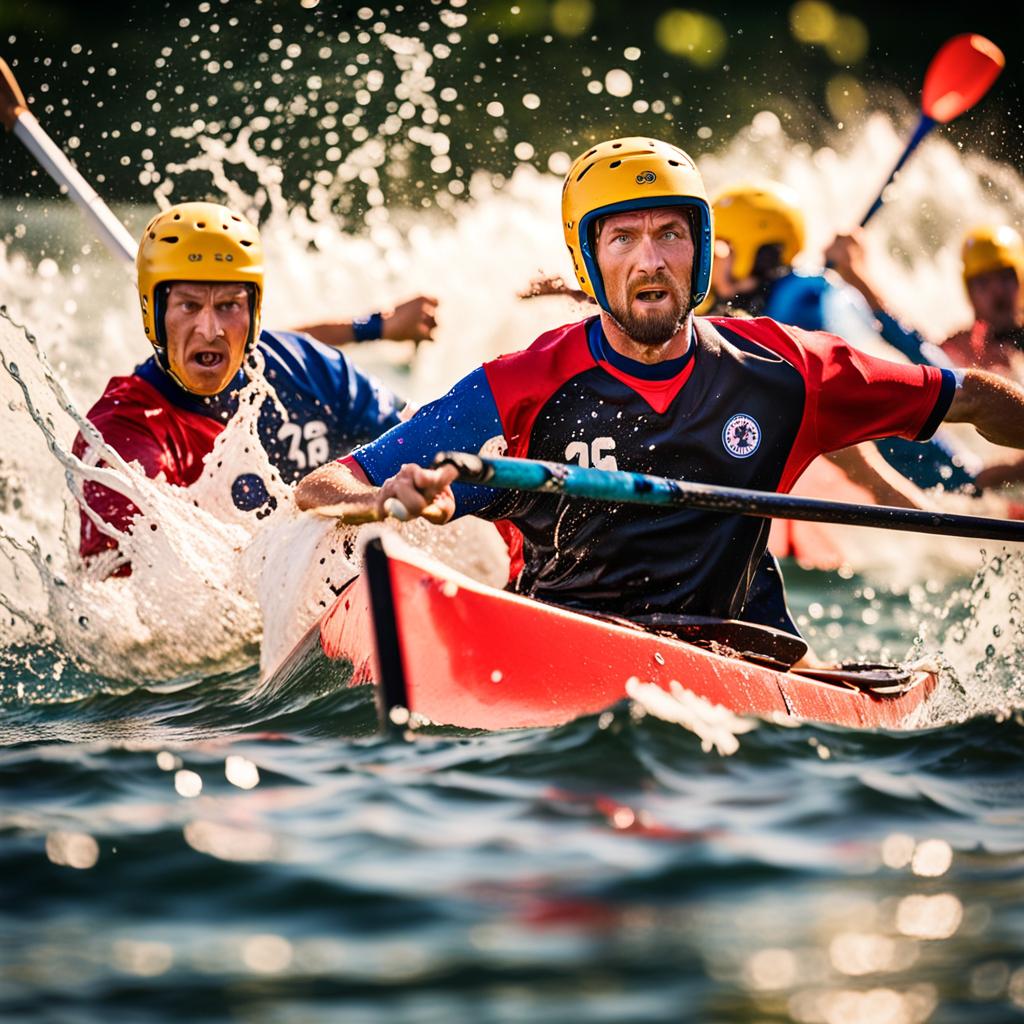
Canoe Polo: A Dynamic Water Sport with Global Appeal
Canoe Polo, an exciting and fast-paced water sport, combines the thrill of kayaking with the strategy of team play. The sport demands skill, strength, and tactical intelligence, making it a favorite among water sports enthusiasts. Known for its unique gameplay and international competitions, it has carved out a niche in the world of sports. Originating in the early 20th century, it has evolved into a globally recognized activity with amateur and professional leagues. Moreover, its significance extends beyond physical fitness, fostering teamwork and cultural exchange.
This comprehensive guide explores the history, rules, and worldwide presence of Canoe Polo. From its grassroots development in schools to the high-stakes action of professional leagues, this sport has something for everyone.
The Origin and History
It traces its origins to the early 20th century, with informal games played in England and Germany. In 1926, the British Canoe Association first documented the sport as a recreational activity. Over time, variations developed, and organized competitions began taking shape.
During the 1940s and 1950s, Germany and France introduced structured gameplay, laying the foundation for modern Canoe Polo. The 1970s marked a turning point when international guidelines were established. This development culminated in the creation of the International Canoe Federation (ICF) rules, which remain the standard today.
By the 1990s, Canoe Polo had grown significantly, earning a spot at the ICF World Championships. These events brought together athletes from across the globe, showcasing the sport’s versatility and appeal. Today, Canoe Polo continues to evolve, attracting participants of all ages and skill levels.
Global Popularity
Canoe Polo enjoys a growing fanbase worldwide, particularly in Europe, Asia, and Oceania. Nations like Germany, France, and the Netherlands boast strong Canoe Polo traditions. Clubs and local leagues actively promote the sport, hosting regular tournaments that attract international attention.
In Asia, countries like Japan and China have embraced Canoe Polo, investing in youth development programs and facilities. Oceania, especially Australia and New Zealand, is known for its competitive teams and vibrant community events.
North America is witnessing a steady rise in interest. Canada and the United States have established leagues and training camps to nurture new talent. Meanwhile, South America and Africa are beginning to explore the sport’s potential, with grassroots initiatives gaining momentum.
Amateur Canoe Polo: A Community-Driven Sport
At the amateur level, Canoe Polo thrives in schools, colleges, and local clubs. Many educational institutions include the sport in their physical education programs. These initiatives introduce students to kayaking, teamwork, and water safety.
Youth leagues play a crucial role in building future talent. Clubs often organize friendly matches and regional tournaments, allowing young players to develop their skills in a supportive environment. Parents, coaches, and community members actively participate, fostering a sense of belonging.
Additionally, amateur Canoe Polo serves as a platform for inclusivity. Adaptive versions of the sport accommodate individuals with disabilities, ensuring everyone can join the fun. Such efforts highlight the sport’s commitment to accessibility and diversity.
Professional Canoe Polo Leagues Around the World
Professional Canoe Polo leagues operate in several countries, showcasing the sport at its highest level. In Europe, the European Canoe Association (ECA) organizes championships that draw top-tier athletes. Countries like France, Italy, and Spain have domestic leagues with loyal fanbases.
In Oceania, Australia’s National Canoe Polo League stands out as a premier competition. Teams compete in a series of matches throughout the year, culminating in national championships.
Asia is steadily building professional structures. Japan and China have launched leagues featuring regional teams and international collaborations. These efforts aim to raise the profile of Canoe Polo in the region.
Although North America lacks large-scale leagues, efforts are underway to establish professional circuits. Canadian and American clubs frequently collaborate to promote competitive events.
Political and Social Significance of Canoe Polo
It transcends its role as a recreational activity, carrying significant political and social implications. The sport often serves as a bridge between cultures, fostering international understanding through friendly competition.
At a local level, Canoe Polo promotes community engagement. Clubs and organizations collaborate to provide resources, training, and opportunities for young athletes. These programs not only encourage physical activity but also address issues like youth development and mental health.
Politically, it has been used as a tool for diplomacy. International tournaments bring together diverse nations, highlighting shared values and mutual respect. This cultural exchange contributes to global unity and cooperation.
Moreover, the sport has inspired environmental initiatives. Canoe Polo advocates for clean waterways and sustainable practices, aligning with broader conservation efforts. Players and fans often participate in cleanup drives and awareness campaigns, showcasing their commitment to protecting the planet.
The Rules of Canoe Polo
It follows a distinct set of rules designed to ensure fair play and safety. Matches are played in a rectangular pool or water body, measuring 35 meters by 23 meters. Two teams of five players each compete to score goals by throwing the ball into a suspended net.
The game begins with a sprint, where players paddle to retrieve the ball from the center. Each match consists of two halves, typically lasting 10 minutes each. Teams switch sides at halftime.
Players use specially designed kayaks for maneuverability. Paddles are used to propel the kayak and block the ball. Body contact is allowed but regulated to prevent injuries.
The ball can be passed using hands or paddles. Players must release the ball within five seconds of holding it. Defensive strategies often involve forming a “zone” to block the opposing team’s attacks.
Fouls result in free throws, while serious infractions may lead to player ejections. Referees monitor the game closely to enforce rules and ensure smooth gameplay.
The Future of Canoe Polo
Canoe Polo’s future looks promising as it continues to expand its reach. Innovations in equipment and technology are enhancing player performance and safety. Virtual training tools are helping athletes refine their techniques, even off the water.
Globally, efforts to include Canoe Polo in multi-sport events like the Olympics are gaining momentum. Such recognition would boost the sport’s visibility and attract new participants.
Grassroots programs remain the backbone of Canoe Polo’s growth. By investing in youth development and community engagement, the sport can inspire the next generation of athletes.
Ultimately, it embodies the spirit of teamwork, perseverance, and fun. Its rich history and global appeal ensure it will remain a cherished sport for years to come.
Canoe Polo, with its thrilling gameplay and vibrant community, continues to capture hearts worldwide. Whether as a casual pastime or a professional pursuit, it offers endless opportunities for growth and connection. Dive into this fascinating sport and discover why it’s making waves across the globe!





